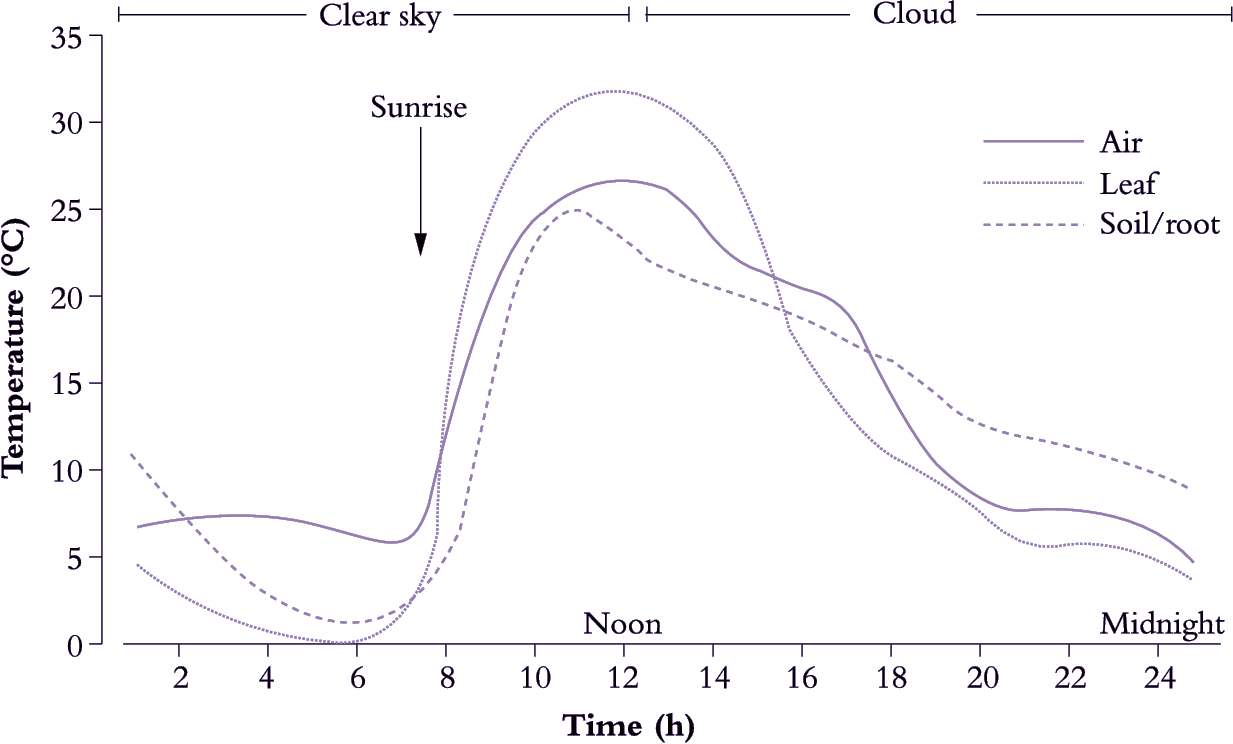Most field studies on the relation between growth (and yield) and temperature are based on meteorological data collected in the vicinity of the crop or ecological area under examination. Although these data have proved to be of considerable value in assessing the response of plants to temperature, actual plant temperatures can differ considerably from air temperature and temperatures can also vary from organ to organ within a plant.
Plant temperatures will be influenced by plant form (erect or prostrate), leaf area, aspect (e.g. north- or south-facing slope), irradiance (sun angle, cloud cover and altitude) and air flow (wind). There are also plant characteristics such as reflection from the surface of the leaf, leaf angle and leaf cooling by transpiration which will reduce plant temperature and may minimise the damage associated with above-optimal air temperatures. At the other end of the scale, where there is moisture on leaves, the latent heat produced during external ice formation (a white frost) may provide some initial protection of tissues against frost damage.
Leaf temperatures generally follow the diurnal changes in air temperatures (Fig. 14.4). At sunrise with a clear sky there is a rapid rise in air temperature and leaf temperature, with a slower and lower rise in root and surface soil temperature. This relationship is altered considerably by cloud cover and at night root temperatures will be higher than leaf temperatures. Organ volume (thickness) can also have a marked influence on temperature and this can be seen, for example, in the apple-growing regions around Auckland in New Zealand. On a windless sunny day with an air temperature of 26°C, while leaf temperature in an apple orchard may reach 29°C, the peripheral flesh of the fruit on the sunny side of a tree can reach 45°C.
Under normal field conditions mean day temperatures can commonly be 5°C to 10°C higher than mean night temperatures, with a much greater amplitude between maximum and minimum temperatures. The importance of this day/night differential has received considerable attention in relation to the growth and yield of glasshouse crops where there is the possibility of some degree of temperature control. However, it is also of interest in field crops in relation to the development of models for use in predicting the effect of weather conditions on crop development.
Total plant growth would be favoured by low night temperatures as this would reduce respiratory losses at a time when the supply of carbohydrate might become limiting. However, dry matter production for a wide range of crops grown under constant but optimal temperature is equal to and often greater than dry matter production by the same crops grown under differential day/night temperatures with the same mean value. Where a day/night temperature differential is imposed, low night temperatures rather than low day temperatures favour growth. The amplitude of the day/night temperature differential is also important and increasing this from 10°C to 20°C can reduce growth.
